The Fleming Fund is working with Uganda’s health care system to break down the barriers to disease surveillance by strengthening laboratory and diagnostic capacity in antimicrobial resistance (AMR) - leveraging in-country infrastructure and sustainability - for global health security.
One Health: breaking down silos and driving the Fleming Fund forward
To mark One Health Day, we revisit the holistic concept spanning human, animal, and environmental health, which is one of the Fleming Fund’s guiding principles.
Partnering with over a hundred grantees from cross-disciplinary in the human health, animal health, and environmental sectors, the Fleming Fund is investing in up to 25 countries across Africa and Asia, to establish an effective antimicrobial resistance (AMR) data surveillance network.
We speak to Professor Stanley Fenwick, Technical Lead for One Health and Animal Health at Mott MacDonald, the Fleming Fund Management Agent, exploring the challenges faced in promoting a One Health approach to solve one of the world’s most critical health epidemics.
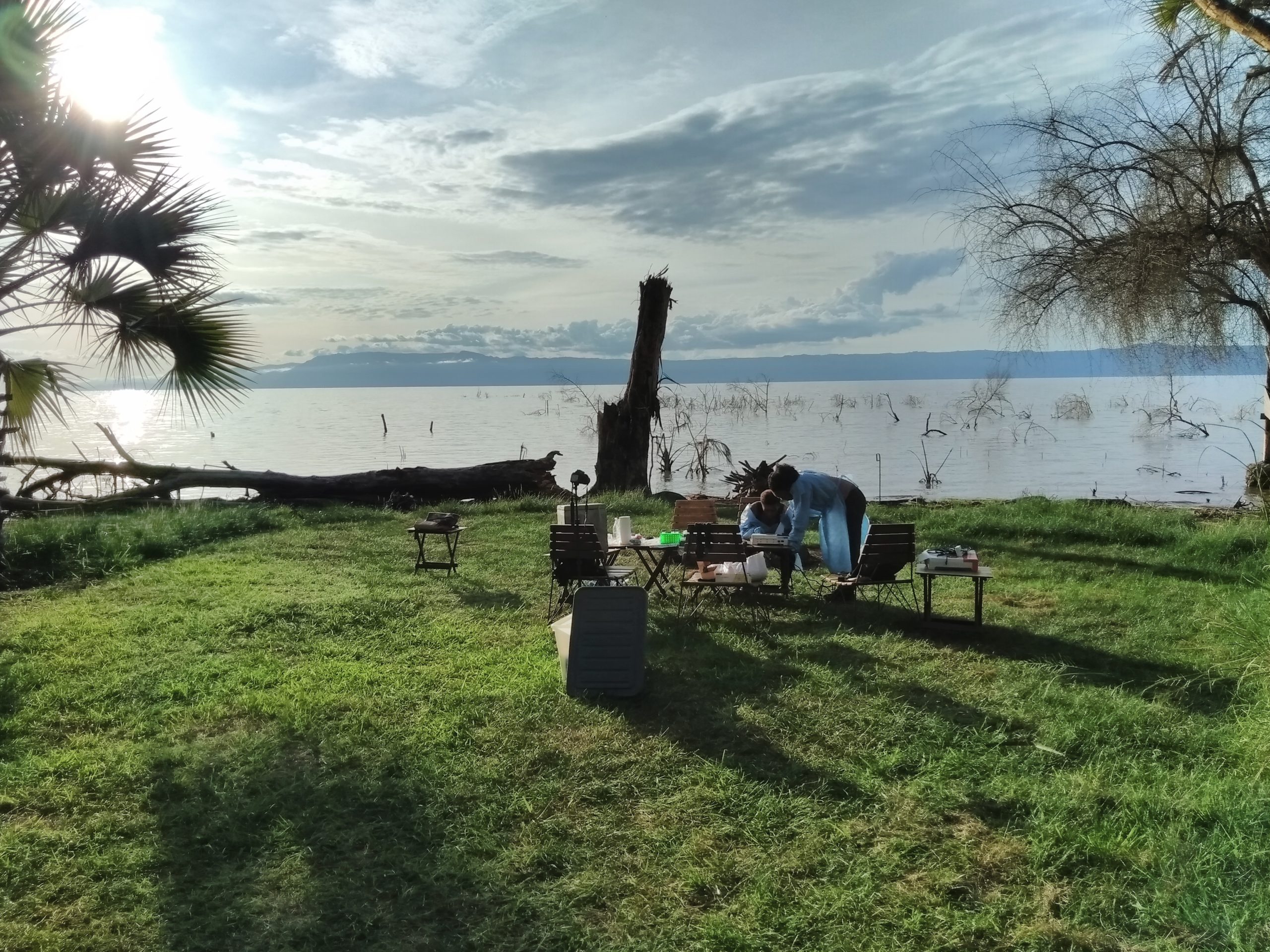
Aquaculture AMR sample sequencing at Lake Eyasi as part of Fleming Fund regional grant, SEQAFRICA. Tanzania. Copyright: Marco van Zwetselaar CC BY-SA 4.0.
One Health is defined as a collaborative, multisectoral approach that aims to sustainably balance and optimise the health of people, animals, and ecosystems.
AMR is a typical One Health issue, as antibiotics are widely used (and misused) in both humans and animals, and the environment acts as a reservoir for drug-resistant microorganisms and genes.
If you only tackle one arm of those three different areas, you're going to miss the boat completely, says Prof Fenwick. It's a no-brainer; the health of humans, animals, and the environment are completely interlinked and without a multi-sectoral approach to AMR, the chances of reducing the problem are extremely limited.
Trying to improve the AMR situation in humans by reducing antibiotic use, the problem will persist because unrestricted antimicrobial use (AMU) in animals will still result in drug-resistant organisms transmitted to people through the food chain either directly via animal products or indirectly via environmental contamination with animal waste.
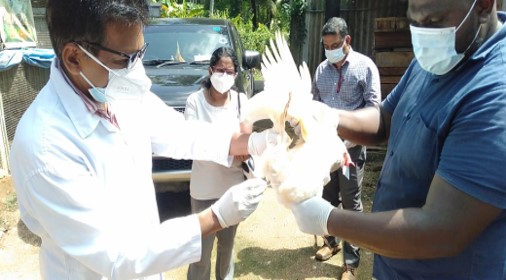
Fleming Fund fellows' poultry sampling for AMR surveillance in Sri Lanka.
Guiding light
One of the Fleming Fund’s guiding objectives is to facilitate and support a robust One Health framework. Alongside the programme’s grantees, the Fund is working to reduce AMU in animals and humans by increasing multisectoral antibiotic and resistant organism surveillance. This facilitates cross-disciplinary, One Health data that is shareable and used for countrywide decisions.
The Fleming Fund supports governments in up to 25 LMICs across Africa and Asia, spearheading One Health and AMR coordination committees to produce and analyse multisectoral surveillance data and inform relevant policies that reduce drug resistance. AMR is one of the issues that lies at the human-animal-environment interface and therefore requires a collaborative approach.
We need to motivate and drive forward all sectors of government to achieve a strong One Health approach, explains Prof Fenwick. Breaking down traditional silos between different Ministries can be difficult, but it is essential for the development of effective strategies to combat AMR.
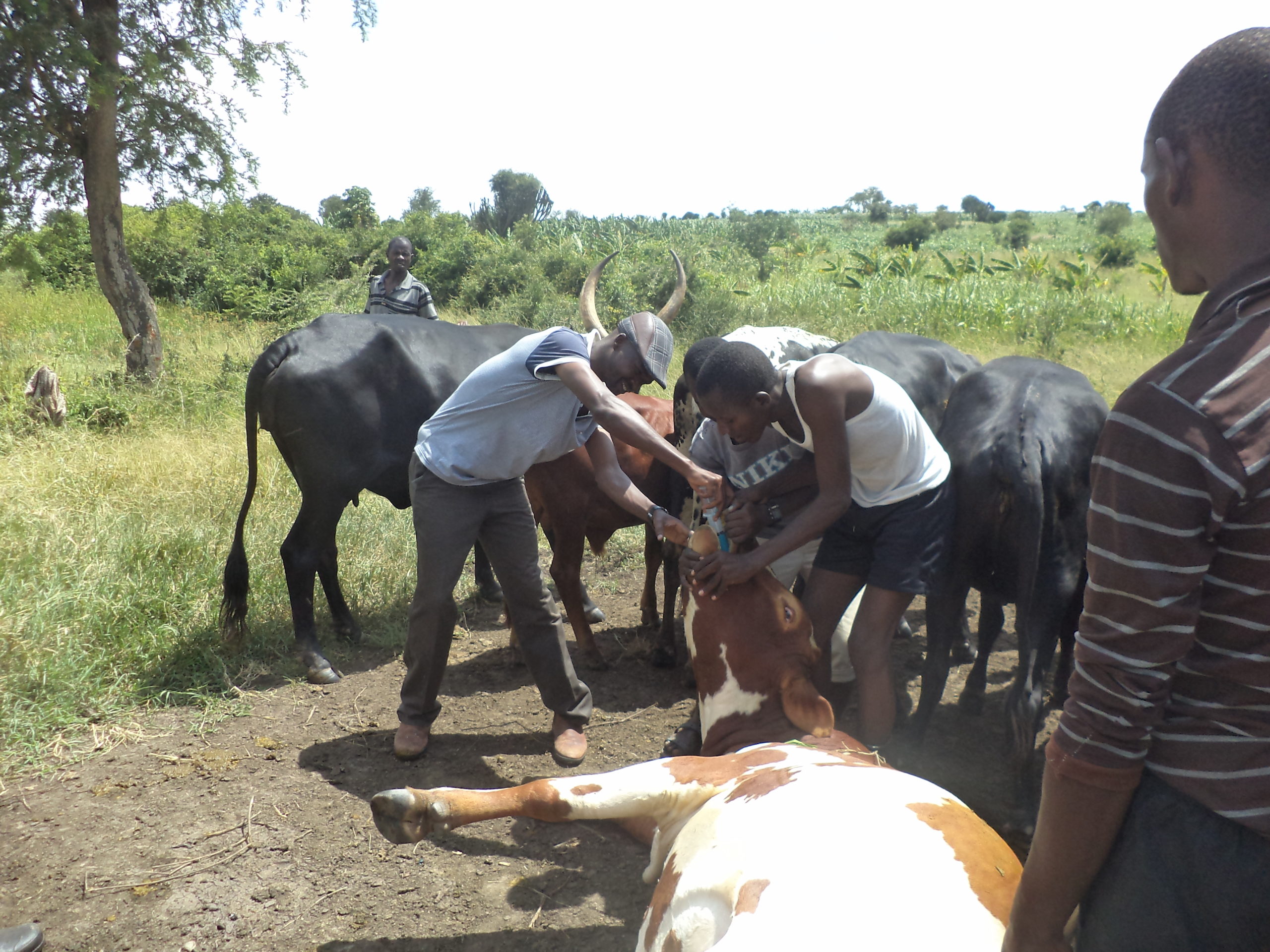
Alumni Fleming Fund fellow Joseph Kungu studying animal health in Uganda. Credit: Joseph Kungu.
Crosscutting AMR
In addition, different approaches are needed to tackle AMR across different sectors. For example, antimicrobial stewardship for human health is difficult to replicate in animal health, due to the complexities of the veterinary industry. However, there is a vital need to develop appropriate strategies for both sectors to control the cross-cutting issue of AMR.
For example, if we're regulating pharmacies for human health, we also need to do this for the animal drug industry, said Prof Fenwick. Agri-vets often sell antibiotics to farmers directly, without prior veterinary knowledge or understanding of the consequences.
There is also the need to persuade the animal health sector to reduce antibiotic use to protect human health. The use of antibiotics by farmers to protect the health of their animals and increase productivity is well embedded in the agricultural industries.
If you are in a major dairy-producing country, then AMR organisms such as those causing mastitis in cattle, can be a big issue for farmers and producers. Also, when exporting meat and animal products, antibiotic residues can be traced, but the emphasis of the problem is improving human health.
The Fleming Fund is supporting grantees to work closely, not only with the human health sector but also with the agricultural industry to advocate and implement good One Health practices that benefit countries.
The animal sector is underfunded and the number of animal health professionals in the countries we work in is often incredibly low, with as little as 3-8 vets, countrywide.
LMICs rely on ‘Para’ vets or animal health technicians who are not adequately trained in the mechanisms of antibiotics and resistance. Therefore, we also need to support educating animal professionals, with a major emphasis on practitioner engagement in the Fleming Fund’s second phase, added Prof Fenwick.
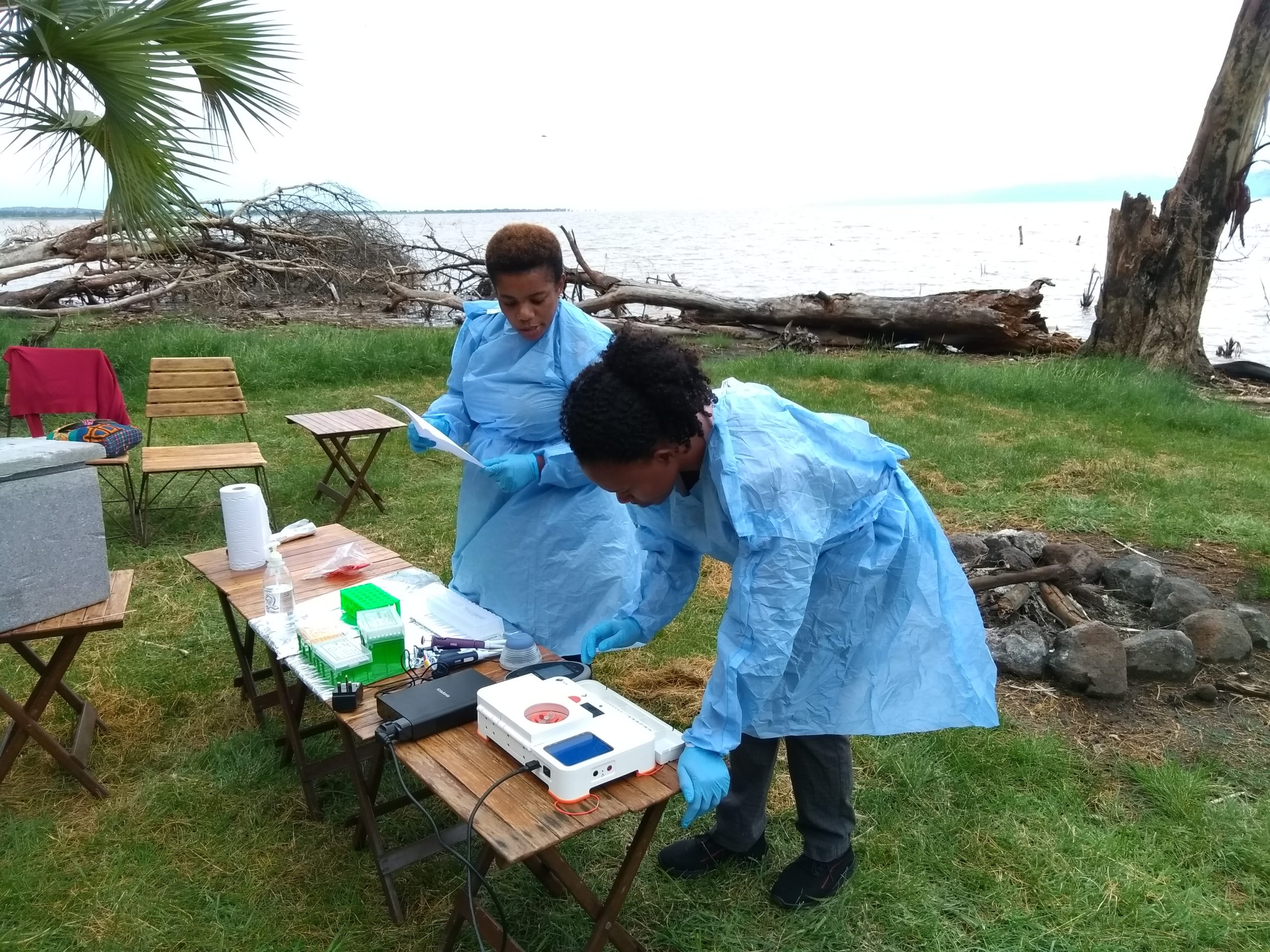
Field sequencing lab for aquaculture AMR study, Lake Eyasi, Tanzania. Credit: Marco van Zwetselaar CC BY-SA 4.0.
Incorporating the environment
One Health includes the environment; however, the approach has typically focused on humans and animals. In the past, it has proven too difficult to involve the environment sector, with environment agencies often not understanding their role in One Health, explains Prof Fenwick.
If you are working in the water area, for example, or wildlife conservation, it is hard sometimes to see how One Health affects you. That has changed a great deal in the last decade or two with many new diseases arising from wildlife, and an understanding that wildlife and the environment have a significant role to play in human disease.
Globally, we have seen the evolution from a Tripartite approach to combating the global AMR issue, involving WHO (World Health Organisation), FAO (Food and Agricultural Organisation), and WOAH (World Organisation for Animal Health) to a Quadripartite approach including UNEP, the United Nations Environment Programme, and we need to support that mechanism at the country level.
In phase II of the Fleming Fund, there will be greater collaboration with the environment sector and agencies to support their involvement in AMR committees and dialogue to influence actions and policymaking, alongside other multisectoral stakeholders.
We are aiming to work closely with the environment sector to improve national surveillance capabilities by ensuring that we are also collecting relevant environmental AMR data and including it in integrated analyses, said Prof Fenwick.
Wastewater surveillance has been used for several years to track the spread of viruses by communities, such as COVID-19 and poliovirus. This is much more effective than traditional sampling of humans and animals from hospitals or farms, explains Prof Fenwick.
Water surveillance
This and integrated surveillance, will be supported by the Fleming Fund. In particular, the Tricycle Protocol to track resistant ESBL-E. coli bacteria from animals, humans, and the environment in the same area, at a similar point in time. When identified, such bacteria are further examined using whole genome sequencing to define AMR patterns.
This process is more efficient by collecting strategic water samples where animals congregate in markets or abattoirs, as already done in the veterinary industry, rather than collecting sample data from farms which is a much more expensive and large enterprise. Like taking samples of wastewater from hospitals for antimicrobial susceptibility testing.
Sustainable investment
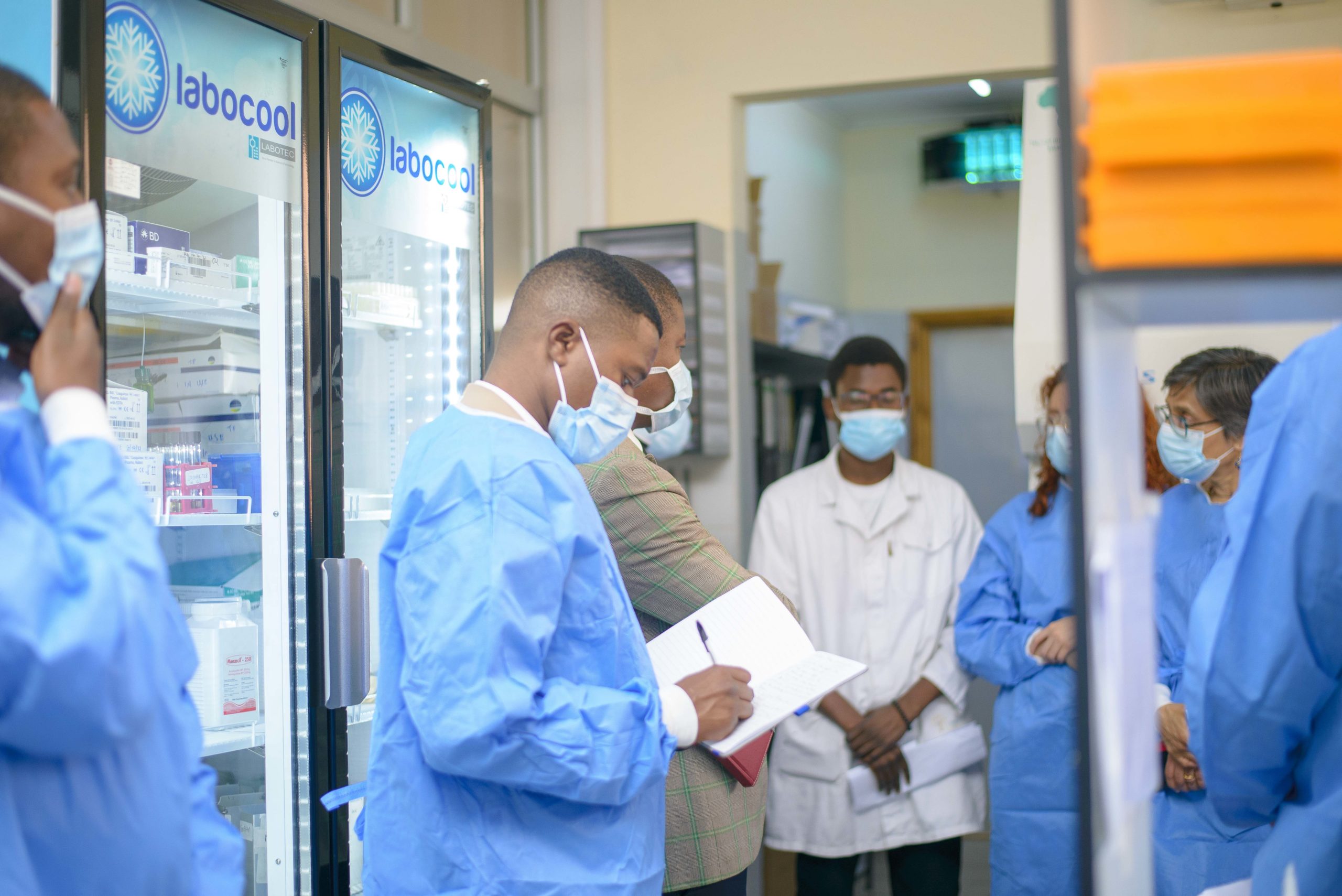
Government visit to Queen Elizabeth Central Hospital, Malawi - supported by the Fleming Fund. Credit: Mott MacDonald.
Governments need to be able to generate, interpret, and understand the relevance of AMR data. This requires investment in laboratories and the health workforce. The Fleming Fund supports the production and analysis of quality and shareable data to be used for policymaking and regulation.
This eliminates risk for the population, addressing global AMR, and driving forward long-term outcomes as a sustainable investment.
The reasoning behind One Health Day is to raise awareness of the issues and advocate for a One Health approach to mitigate them, which is what the Fleming Fund has been doing with AMR from the beginning of phase I through these outputs, said Prof Fenwick.
Our role is to bring this data and information together to create a coherent and logical message for politicians who do not often have a medical, veterinary or environmental background.
This will not be achieved unless all groups are working together at country-level and governments fund all One Health sectors to mitigate the risks of AMR, explained Prof Fenwick.
Increasing funding to hospitals to support microbiology laboratory capacity and data use by antimicrobial stewardship committees needs to work alongside building animal and environmental health laboratory and technical capacity, which is often quite low, added Prof Fenwick.
The Fleming Fund is geared towards long-term outcomes that can't be recognised or realised without a solid One Health approach; encapsulating durable, resilient, and integrated health systems, and to achieve this can be difficult, but is something we must strive towards.
More Like This
Programme Update
From Programme Update, Case Study: Breaking down AMR barriers in Uganda , Date: 05/08/2022
A plaque on the side of the Saint Mary’s Hospital in Paddington, London, UK, commemorates the discovery of penicillin, the first antibiotic, in 1928. Fungal spores, blown by the wind, landed on Sir Alexander Fleming's Petri dishes killing the bacteria he was growing leading to a revolution in medicine.